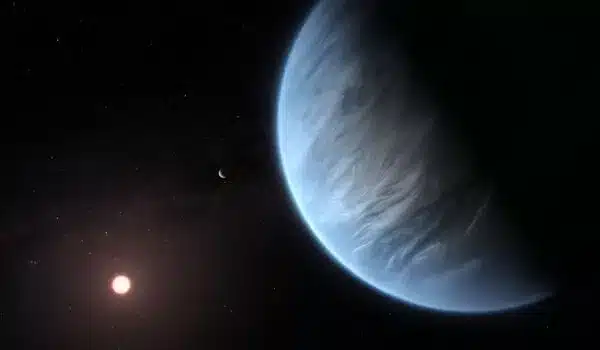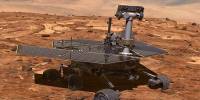Webb is a powerful space telescope designed to examine a wide range of celestial phenomena, including exoplanets and their atmospheres. One of Webb’s primary scientific goals is to detect water vapor in the atmospheres of exoplanets. Scientists expect to detect the presence of numerous chemicals, including water vapor, by examining the spectra of light from distant exoplanets as it travel through their atmospheres. This can provide crucial insights into the composition and circumstances of exoplanetary atmospheres, allowing us to better comprehend the potential habitability of these faraway worlds.
Water is required for the continuation of life as we know it. Scientists disagree over how it got to Earth and if the same processes may spawn rocky exoplanets orbiting distant stars. The planetary system PDS 70, approximately 370 light-years away, may provide new insights. The star has an inner and outer disk of gas and dust separated by a 5 billion-mile (8 billion-kilometer) gap, which contains two known gas-giant planets.
Water vapor has been identified in the system’s inner disk by NASA’s James Webb Space Telescope’s MIRI (Mid-Infrared Instrument) at distances of less than 100 million miles (160 million kilometers) from the star – the region where rocky, terrestrial planets may be developing. (The Earth orbits our Sun at a distance of 93 million miles.) This is the first detection of water in the terrestrial region of a disk already known to host two or more protoplanets.
We’ve seen water in other disks, but not so close in and in a system where planets are currently assembling. We couldn’t make this type of measurement before Webb. This discovery is extremely exciting, as it probes the region where rocky planets similar to Earth typically form.
Giulia Perotti
“We’ve seen water in other disks, but not so close in and in a system where planets are currently assembling. We couldn’t make this type of measurement before Webb,” said lead author Giulia Perotti of the Max Planck Institute for Astronomy (MPIA) in Heidelberg, Germany.
“This discovery is extremely exciting, as it probes the region where rocky planets similar to Earth typically form,” added MPIA director Thomas Henning, a co-author of the paper. Henning is the co-principal investigator of Webb’s MIRI (Mid-Infrared Instrument), which made the detection, and the principal investigator of the MINDS (MIRI Mid-Infrared Disk Survey) program which took the data.

A Steamy Environment for Forming Planets
PDS 70 is a K-type star that is colder than our Sun and has an estimated age of 5.4 million years. This is a relatively young star with planet-forming disks, therefore the detection of water vapor was unexpected.
The gas and dust concentration of planet-forming disks decreases over time. Either the radiation and winds from the central star sweep out such material, or the dust develops into larger objects that eventually form planets. Because previous studies failed to identify water in the central portions of similarly aged disks, astronomers assumed it would perish due to the severe star radiation, resulting in a dry environment for the development of any rocky planets.
Astronomers haven’t yet detected any planets forming within the inner disk of PDS 70. However, they do see the raw materials for building rocky worlds in the form of silicates. The detection of water vapor implies that if rocky planets are forming there, they will have water available to them from the beginning.
“We find a relatively high amount of small dust grains. Combined with our detection of water vapor, the inner disk is a very exciting place,” said co-author Rens Waters of Radboud University in The Netherlands.
What is the Water’s Origin?
The find begs the question of where the water came from. To explain their discovery, the MINDS team explored two potential scenarios. One theory is that as hydrogen and oxygen atoms combine, water molecules develop in the location where we perceive them. Another theory is that ice-coated dust particles are being moved from the cool outer disk to the hot inner disk, where the water ice sublimates and becomes vapor. Such a scenario would be remarkable, given that the dust would have to bridge the vast chasm created by the two giant planets.
Another mystery highlighted by the discovery is how water could exist so near to the star, given that the star’s ultraviolet light would tear any water molecules apart. Surrounding material, such as dust and other water molecules, most likely serves as a protective shield. As a result, the water identified in PDS 70’s inner disk may survive destruction.
Finally, the team will employ two more of Webb’s instruments, NIRCam (Near-Infrared Camera) and NIRSpec (Near-Infrared Spectrograph), to investigate the PDS 70 system in order to gain a better understanding. These observations were made as part of the 1282 Guaranteed Time Observation program. This discovery was published in the journal Nature.















